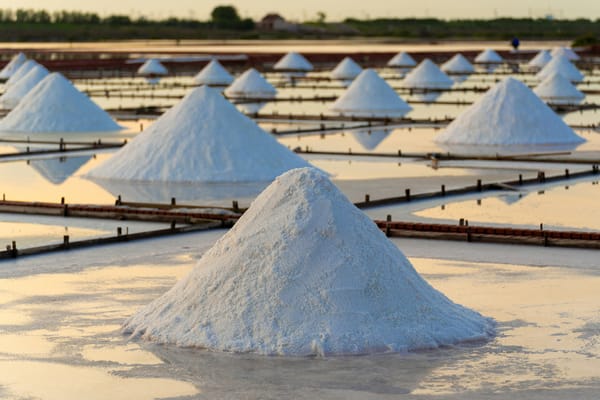Minerals are extremely important in many functions within our body. Some examples include nerve signal transduction, cell–cell interaction, gene expression, and mitochondrial energy metabolism (1, 2, 3, 4).
Whilst most agree on the indispensability of most minerals – they are essential nutrients, after all –, there has been some debate about the mineral sodium. You, too, might have heard, that sodium is bad in various ways. Apparently, it can increase our blood pressure (which is made from correlational, not causal data).
To me it's weird to demonise the very mineral, which allows us to think, for sodium is the mineral, through which nerves signals travel along the cell surfaces of our neurons (1). Still, there is such a thing as too much of the good stuff. After all, we can't drink sea water.
But how do we know how much is too much?
Our body has this incredibly and little known mechanism called thirst. I know, amazing. The whole point of thirst is balancing water consumption against salt consumption and urea excretion.
So, if you're eating too much salt, you'll be getting thirsty, to which there are two solutions: drink more or eat less salt. If your pee's deep yellow, you should probably just drink more, if your pee is clear, then probably eat less salt.
Our body isn't as stupid as we are often made to believe. All we need to do is nourish it properly and treat it rightly.
Godspeed and to your health,
Merlin.
References
- Alberts, B., Johnson, A., Lewis, J., Morgan, D., Raff, M., Roberts, K., and Walter, P. (2015). Membrane Transport of Small Molecules and the Electrical Properties of Membranes. In Molecular Biology of the Cell, (Garland Science, Taylor & Francis Group, LLC), pp. 597-640.
- Alberts, B., Johnson, A., Lewis, J., Morgan, D., Raff, M., Roberts, K., and Walter, P. (2015). Cancer. In Molecular Biology of the Cell, (Garland Science, Taylor & Francis Group, LLC), pp. 1091-1144.
- Alberts, B., Johnson, A., Lewis, J., Morgan, D., Raff, M., Roberts, K., and Walter, P. (2015). Control of Gene Expression. In Molecular Biology of the Cell, (Garland Science, Taylor & Francis Group, LLC), pp. 369-438.
- Alberts, B., Johnson, A., Lewis, J., Morgan, D., Raff, M., Roberts, K., and Walter, P. (2015). Cell Chemistry and Bioenergetics. In Molecular Biology of the Cell, (Garland Science, Taylor & Francis Group, LLC), pp. 43-108.










